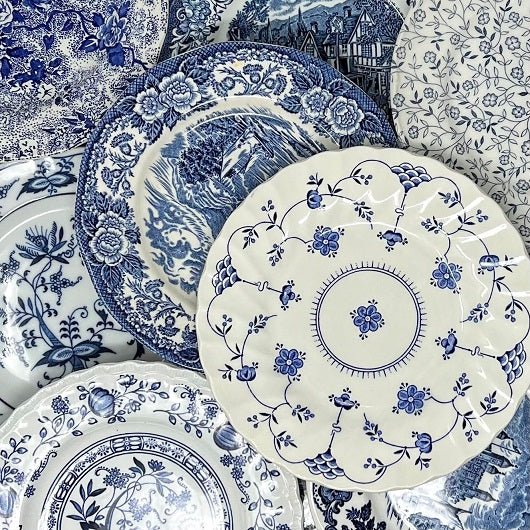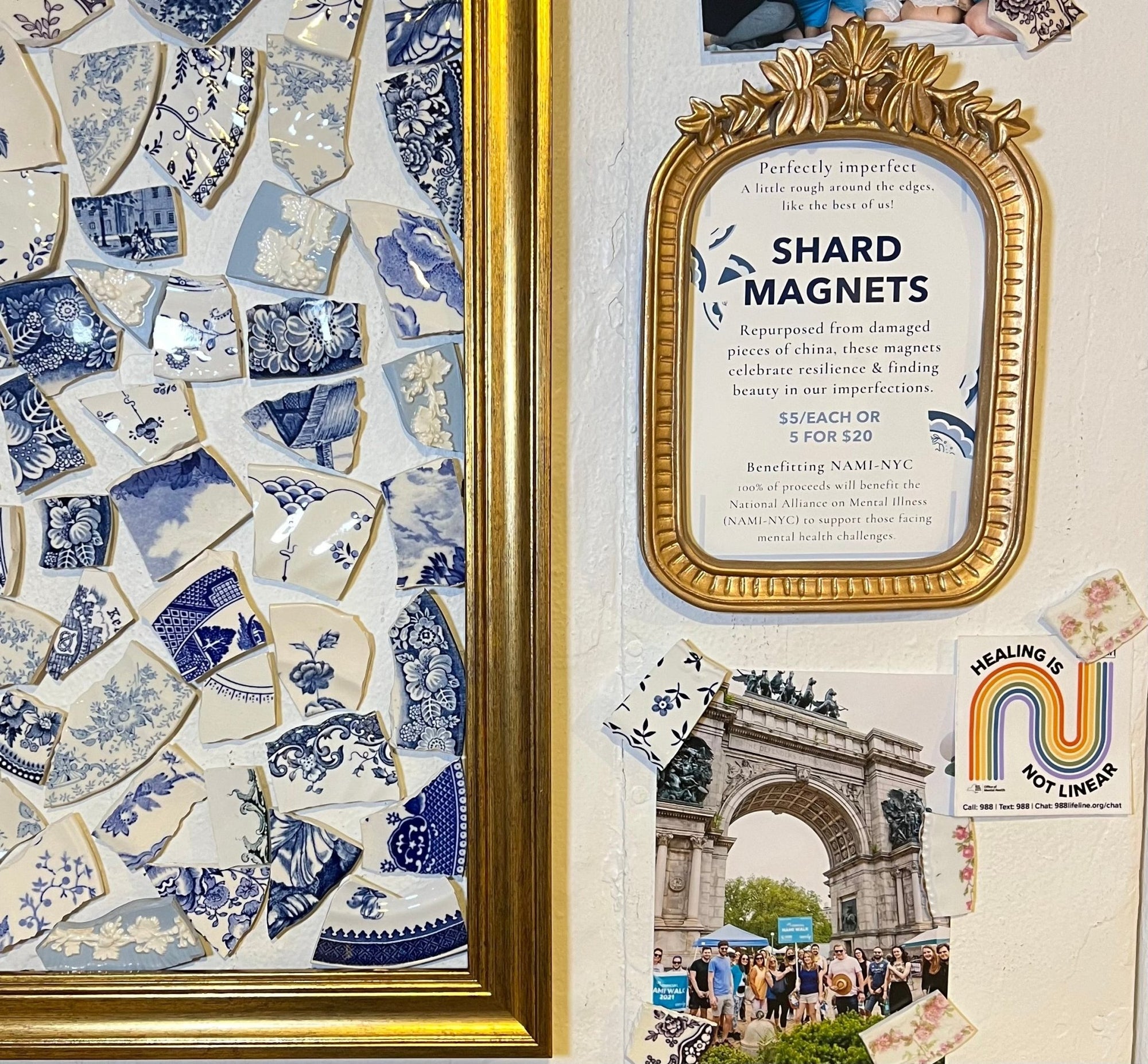If you assumed that transferware china (a.k.a. transferware) was just like most other types of fine dinnerware, well, you’re not really wrong! But the term "transferware" is generally used to describe plates made from earthenware and ironstone, types of pottery that are distinct from fine dinnerware made from porcelain. So what is transferware, really? Where does it come from, and what makes it so unique? Keep reading to find out!
What is transferware?
Transferware is a term used to describe pottery that has a pattern applied to it by way of a transfer or imprint. First, a decorative print is transferred from an engraved, inked copper plate to a sheet of paper.
The paper is then applied to a piece of unfired clay pottery (meaning it hasn't yet gone into the kiln), which absorbs the ink from the paper.
Transferware prints are most often produced on earthenware, a type of coarsely grained clay that is abundant in nature. However, transfer prints are also commonly found on ironstone, porcelain and even fine bone china.

Artisan applying a design to earthenware pottery before firing in the kiln. Image c/o Nancy Roberts of Nancy's Daily Dish
What brands are known for transferware china?
Some of the most popular transferware china brands are those that have been around for many years, are respected for their craftsmanship and artistry, and have established a solid reputation among collectors.
Primarily made in England as well as places like Japan and Denmark, these brands include Wedgwood, Royal Doulton, Johnson Bros., Royal Worcester, Royal Copenhagen, and Spode, among others.
If you're looking for a piece of transferware china to add to your collection, we recommend considering these names.
What are the most popular transfer patterns and designs?
Most early English transferware borrowed heavily from patterns that were popular in China, the birthplace of porcelain dinnerware. Artists from Europe would travel to different parts of Asia and the Middle East, create depictions of the scenery, and then transfer them to dinnerware for England's aristocracy. Over time, the portfolio of motifs and imagery expanded, but the Chinese-inspired aesthetic, later termed chinoiserie, endured.
In addition to chinoiserie—which typically depicts some combination of pagodas, bridges, willow and pine trees, doves, and hills—the following themes and designs frequently appear in transferware prints:
Flowers & Floral Arrangements: Romantic, bold, whimsical, understated or over-the-top flowers and floral arrangements are the most common motif in vintage china, including transferware. One of my favorites is the bold chintz patterns, which refers to pottery covered in bold, all-over floral designs (similar to chintz textile patterns) known as blue Blue Calico.

Plants, vines, fruits & vegetables:
The Blue Nordic/Blue Onion Pattern featuring onions growing on vines around the plate's border.
Humans and animals, especially birds and horses:

The is the Indies pattern by Johnson Bros. featuring bold florals and a bird sitting on top of the arrangement.
Castles, Landmarks, Boats and Historic Scenes

This is the Coaching Scenes pattern by Johnson Bros. features horses and a carriage transporting several passengers along a country road.
Minimalist, Nordic-looking Designs

This is the Myott Finlandia Pattern by Staffordshire featuring Nordic folk art-looking flowers, vines and scales.
Find examples of these recognizable designs and motifs when you're out and about, or Visit The Brooklyn Teacup to explore our vintage transferware china sets. Find your own collection of vintage, blue and white plates, bowls, teacups, serving pieces, tiered serving trays and more to create your dream tablescape for any occasion.
SHOP NOW










